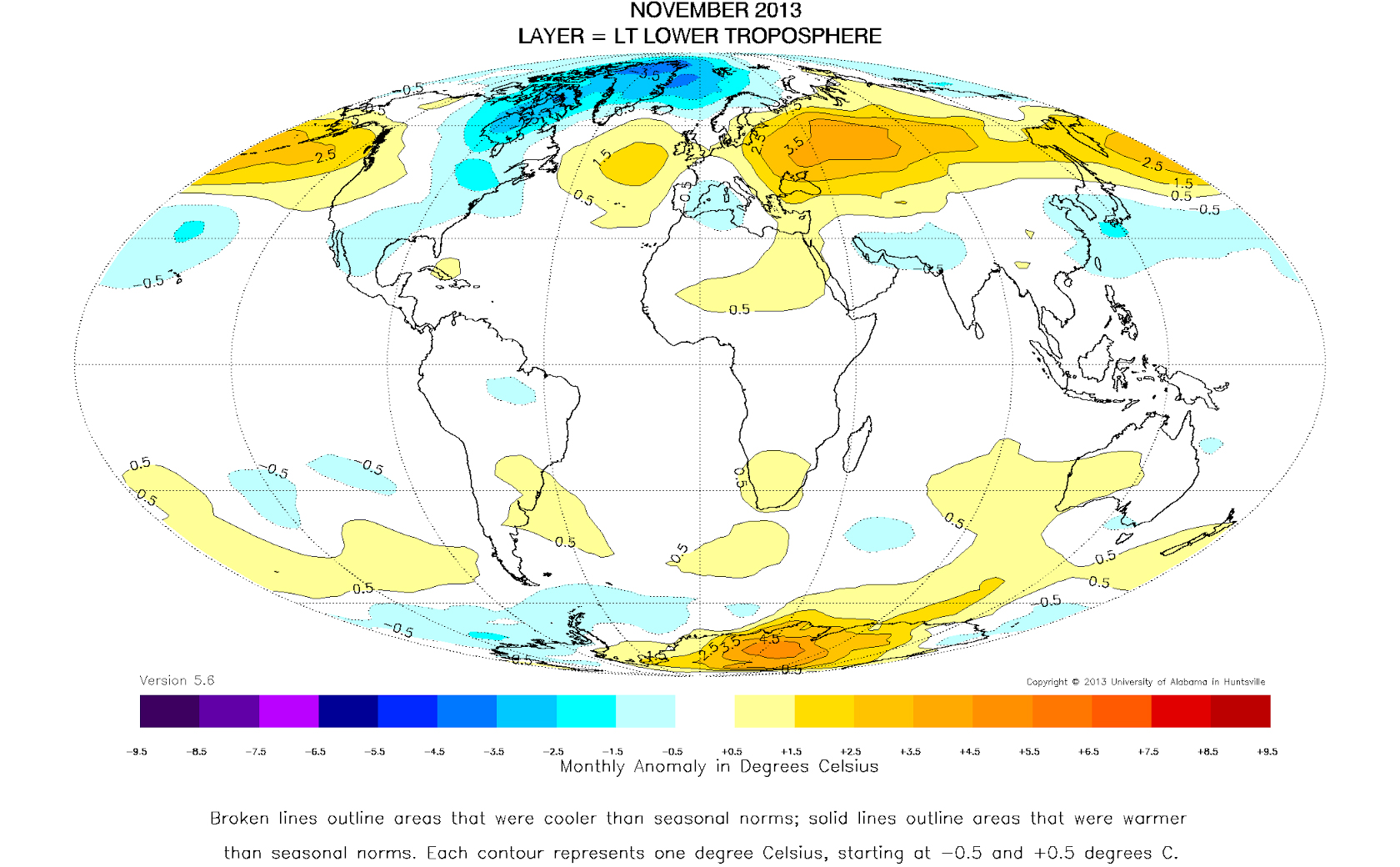It's cold in my backyard! Does that mean there's no global warming?
Since October, deniers in the US have been pointing to the colder-than-normal weather in the US to claim that global warming has stopped. In a twist that should blow their minds, NOAA/NCDC and GISS have both announced that November 2013 was the hottest November globally in recorded history.
How can global temperatures set record highs if the US is so cold? A temperature anomaly map from GISS answers that question nicely:
Notice anything? Yep. Canada and the USA (particularly the Great Lakes region and Northeastern US), along with the Antarctic Peninsula are pretty much the only parts of the entire planet that were below average in November. The rest of the Earth was average to well above average (check out Siberia!). That's why November 2013 was the hottest November for the entire planet since at least 1880.
The same global anomaly pattern appears in satellite data as well. Lower tropospheric UAH data, which measures air temperatures 1,000 meters above the surface, shows the following for November:
Again, eastern North America is colder than average while Eastern Europe/Western Asia, Siberia, and East Antarctica are far warmer than average. Overlaying UAH data with GISS surface data shows the same pattern of temperature rise since 1978:
This shows is the importance of using global data to monitor global warming. The weather in your backyard, country, or even region may be below normal—but that doesn't mean that the entire planet is also below normal.
How can global temperatures set record highs if the US is so cold? A temperature anomaly map from GISS answers that question nicely:
 |
| Map available from NASA GISS |
The same global anomaly pattern appears in satellite data as well. Lower tropospheric UAH data, which measures air temperatures 1,000 meters above the surface, shows the following for November:
Again, eastern North America is colder than average while Eastern Europe/Western Asia, Siberia, and East Antarctica are far warmer than average. Overlaying UAH data with GISS surface data shows the same pattern of temperature rise since 1978:
This shows is the importance of using global data to monitor global warming. The weather in your backyard, country, or even region may be below normal—but that doesn't mean that the entire planet is also below normal.






thanx for posting...
ReplyDeleteBusiness Directory and Information in Various Activity Sectors